 2017 Accelerator Fellow
2017 Accelerator Fellow
Where did you grow up?
Richmond, Virginia.
When/how did you first know that you wanted to be an artist?
When I was very young, maybe six years old, I was left alone in a classroom with a huge blackboard and some chalk. After a matter of minutes, I had filled the entire board with drawings. That’s when I realized I was an artist.
Where do you currently live/work, and how would you describe the arts community there?
I live in a small town outside of Milan, Italy, but I have a studio in the city. Since it is a big city, there’s a lot going on exhibition-wise, but the arts community is dispersed, and this makes it difficult for artists. Most of my artist friends live outside of Milan, and we try to stick together, but life frequently gets in the way.
How would you describe your art to someone who’s never seen it?
My art falls under the category of contemporary abstract paintings. I vacillate between acrylics and oils, depending on the situation. Acrylics work well when there is a particular drying-time limit, such as a residency. Over the years, however, I have come to realize that the organic, voluptuous nature of oil paint is what appeals to me most. It is the sculptural aspect of painting and the way the paint describes space that is the essence of what my work is about. Color is not a main concern, and my palette is limited to just a few.
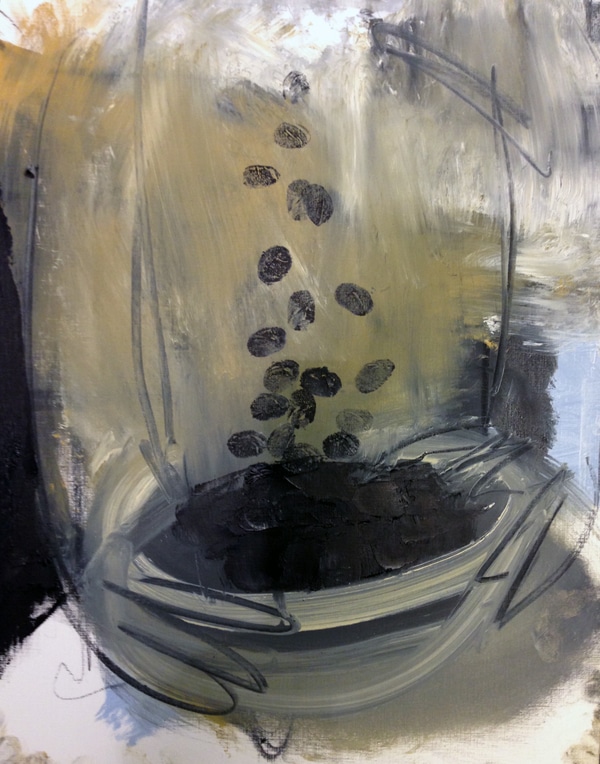
What do you hope to communicate to your audience?
What my work communicates depends on who’s interpreting it, since the meaning is ambiguous. There is meaning in my work, but I want to transform figurative information into something else. At present, I am focusing on an aspect of the migrant situation in Milan. After migrants arrive here, they are not allowed to work, forcing them to live in the margins of society. Lots of them panhandle. I was struck by this while walking to my studio one day and decided to introduce abstractions of the human figure into parts of the urban landscape—ghost-like forms that blend in with the architecture. My goal is to have each viewer invent his/her own personal explanation of the marks and gestures and spaces that come out of this exploration.
What’s been your biggest business challenge?

Getting out of my comfort zone and initiating projects on my own has been a big challenge. Italy is a small country and opportunities for artists are limited, especially for women. Also, the Italian economy has been in a huge slump, lagging behind the US economic crisis by a couple of years. Things are improving, but for a while it was difficult to sell work.
One good thing about living in Milan is the location. It is easy to hop on a train or take a low-cost flight to any major European city, so I am trying to branch out and look for exhibition opportunities elsewhere. It has been a challenge, but it has also been a lot of fun, and I’ve forged new friendships with artists I would not have met otherwise.
Tell us about a business success and what you did to achieve it.
Recently, my website has been getting an average of 700 views per month. I think this is indicative of the grants and fellowships I’ve been applying for, as well as past accomplishments, such as residencies and a commission in Japan.
How do you feel about today’s technology (tools for your business, for creating your art, or both), and has it altered your way of doing business?
I love it. Technology has revolutionized life for artists. I remember the days of shooting slides of my work, sending them through the mail, and waiting. Now, it is relatively easy to apply for residencies, exhibition calls, and the like.
Blogs, websites, Facebook, and Instagram have given me a voice. Sharing my images has been a great way of connecting with people all over the world. Also, I’ve discovered lots of call for artists—including the one for CHF’s Accelerator—through Facebook and posts by friends.
What do you think about the state of today’s art market?
There seem to be many opportunities, but the market can also feel overwhelming. It was eye-opening to discover that only 16 percent of art is sold through galleries. There are possibilities that I need to learn more about, particularly online sales; that’s something I definitely want to pursue. Also, I frequently make artist’s books, and there might be a niche market for those that I should explore.
Give us an example of how you balance studio time with business time.
I go to the studio as regularly as possible, usually four days a week, and I devote about two days a week to business aspects. This varies, of course, but making time for business aspects helps to distance myself from the work. It’s essential for me to clear my head and look at the paintings again after a break. Also, concentrating on the business side of my practice helps me feel like I’m still accomplishing something.
How have you evolved as an artist?
I make conscious decisions to push myself, such as returning to school and attending artist residencies. Currently, I am revisiting printmaking; there have been many new developments in that field, and I want to build on my existing skills.
How have you evolved as an entrepreneur?
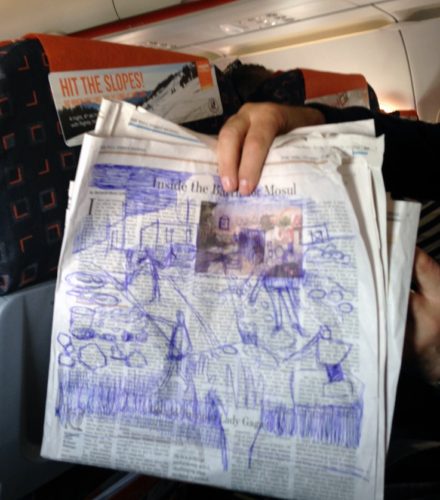
The Internet has revolutionized the promotional side of being an artist. Communicating with others is essential to accomplishing my goals, and I’ve developed my entrepreneurial skills by reaching out to more people via the web. This has even helped me to do a better job of talking about my work in person.
Recently, I was flying back from London on a low-cost carrier. These flights are usually packed, but this time, miraculously, the seat next to me was empty. The man in the aisle seat was asleep, so I took out a ballpoint pen and began drawing on a newspaper. I was so engrossed in what I was doing that I didn’t realize the man had woken up and was watching me draw. He asked me if I was an artist, and as it turns out, he was an art collector and had just attended a few auctions in London. We talked the whole way back and exchanged emails. Before leaving the plane, I got him to hold up my drawing and took a picture of it, but I purposely left it behind, crammed into the seat-back pocket. (That was my original plan—I had intended the drawing as a conceptual piece.) When we said goodbye, he insisted that I email him about my upcoming shows, so now I have contact information for someone who really wants to be on my mailing list.
What role do artists play in our society? What role SHOULD they play?
In our society, artists sometimes play the role of celebrity, but those whose work is meaningful provide sustenance for the soul.
For more information on Mary Crenshaw, see her official CHF bio.



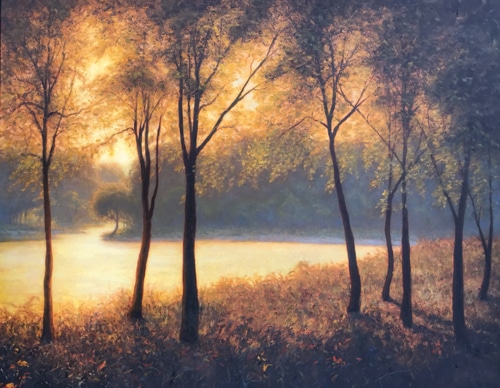
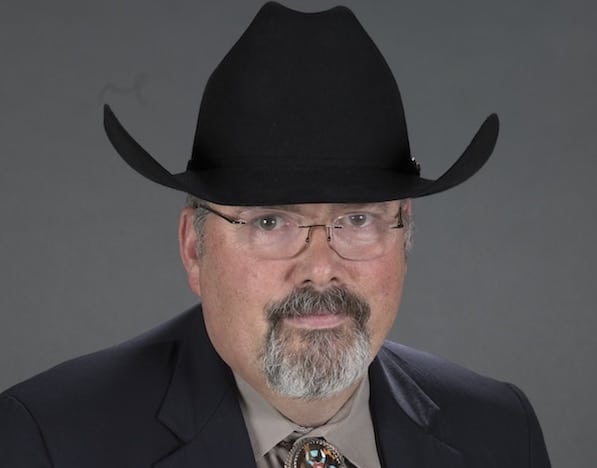
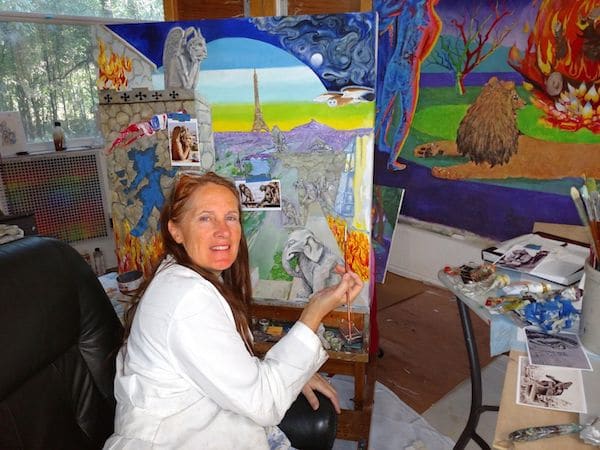
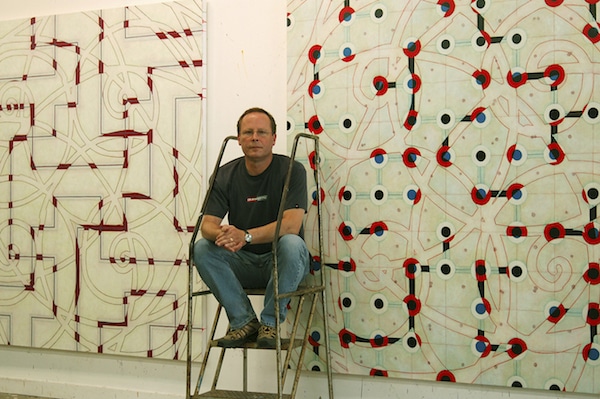

Hi Mary,
Loved the story. I think I recognized you as my Park Avenue neighbor when you went to VCU, friend of Katherine Bowling. Glad to read the update on you and that you are still making art.